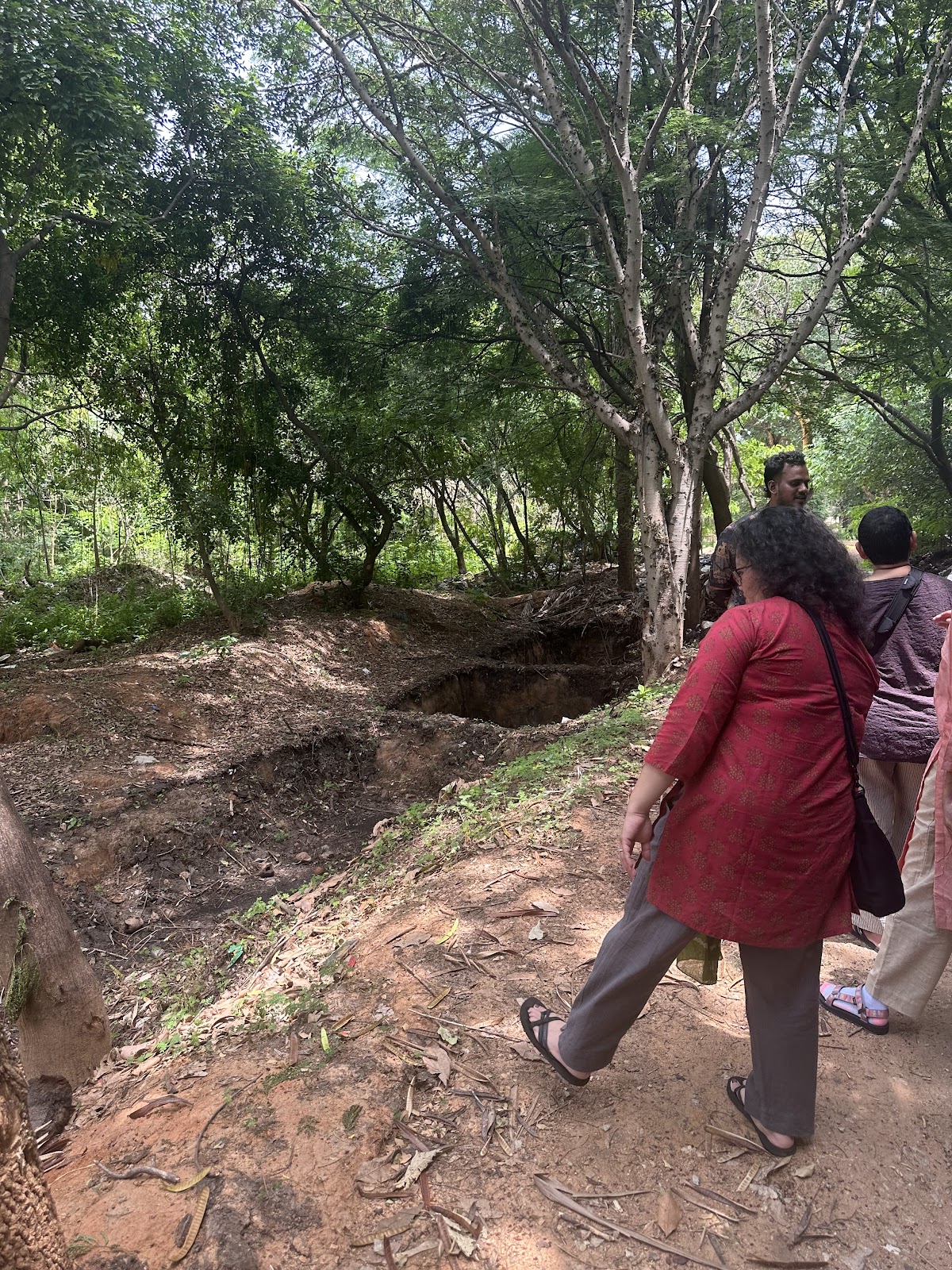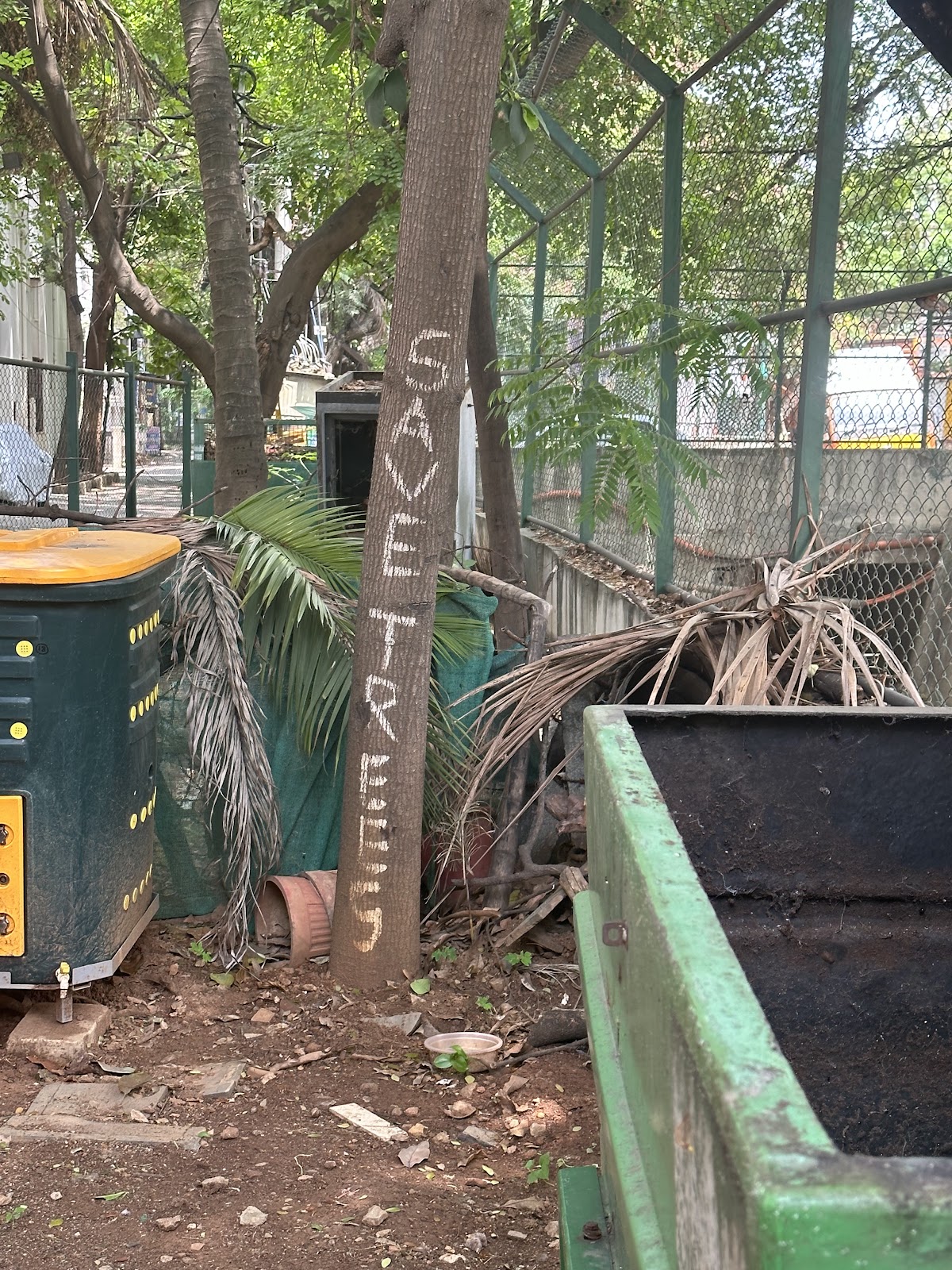Throughout this trip I have constantly been opening my perspective through meeting with different organizations, and this meeting in particular with Haisiru dala and Women of Wisdom was really inspiring. Learning about the waste processing at Hasiru dala, and their zero waste station located within a police compound intrigued me. When we walked up to the waste processing station I was really surprised at the amount of waste the two waste pickers were going through. They were picking through large rooms worth of waste that was scattered across the floor, piled in different places. Both of the women were in bent over positions, one had gloves on, and the other didn’t. They were working very quickly, and with diligence, I could tell they were creating piles of the different types of waste. When the guys (I forgot their names, sorry) were explaining the process to us while we observed their work, I enjoyed learning about the ways the different types of waste were reused, sold, and created into new and different types of sustainable material. For instance they make these particle boards that you can use to build structures out of certain dry waste that has been collected and sorted. Outside of the operation unit, they actually had a structure that they had built with the same boards they created out of the waste. After they explained to us the way the wet waste is processed and alchemized into gas that can be used as energy, I was like “no way.” I was so stunned because although the space that was there was small, they still take in so much waste, and then turn it into a sustainable resource. That is used to then power a kitchen in this compound that is used by one the largest K-9 teams in the state for all their cooking needs. The way that the space was used, I had never seen before, and it made me think about the ways community composting in the states is similar.
I learned even more about these intersections and potential connections when we went to meet with a local neighborhood group made up of all women, the Women of Wisdom as they called themselves. This is a community/block led composting/waste collecting group which is composed of, run by, and supported by women. Visiting their space was really interesting. The composting activity was on a much smaller scale, and was community driven. I was inspired by their resilience and the pure passion that drove them to volunteer their time and create a group of neighbors to take accountability of their own trash, and put into practice a sustainable alternative. They saw an issue that needed attention; they decided to take matters into their own hands, and formed an entire network around them for support. They didn't have to, they just wanted to, and I felt that was very powerful.
After visiting them we visited another waste picking compound that was sustained by Kumuda, who had worked with Hasiru dala in the past, and started her own waste picking operation space. Similar to Women of Wisdom I found it uplifting that she took this whole production into her own hands. She built the physical space with her own resources, even after entities had promised their assistance. Even after there was a fire that burned and damaged the space, she persevered and just built everything back up again. She built and sustained a space that aided 19 other people in having consistent work, who were also mostly women working within this space. Which was another common thing I noticed, not only within Hasiru dala, but throughout a lot of the spaces we visited, the ways in which women are pillars of these spaces. Women make the world go round. It wasn’t new information, but to witness women being foundations of their community is just so moving. Differences that I picked up on was that while Women of Wisdom was a few blocks away, they were operating from an entirely different perspective. The small community group is middle class, operating on a much smaller scale, and of a higher caste. Whereas Kumuda is operating on a much bigger scale in a more industrialized area, and is of a lower caste. While we have been in India learning about caste has been complicated and confusing, but seeing the differences in living spaces, access, environment, barriers, etc was pretty apparent when looking at these two situations.
Being able to see these different perspectives of waste picking, and the social implications of each in a different context made me think a lot about the ways certain roles/ issues in our society are passed down, and often left for the most oppressed to deal with. When people of a higher class take up the same issues, it is seen differently, they are supported differently, and they see themselves in the work differently. Even when its work is seen sometimes as invaluable in the eyes of society, it is exactly the thing that we all need to be doing to survive, we need to be thinking about our waste. These encounters have really made me think of ways community waste awareness can be uplifted, and I hope when I get home I learn more sustainable ways to take care of my waste, and help others around me to do the same.
 |
| At the Bio Gas and Solid Waste Management Center | Photo by Nia K Cunningham |
 |
| At the City Recycler's Association | Photo by Nia K Cunningham |
 |
| At the Ward 177 Lane Composting site | Photo by Nia K Cunningham |














